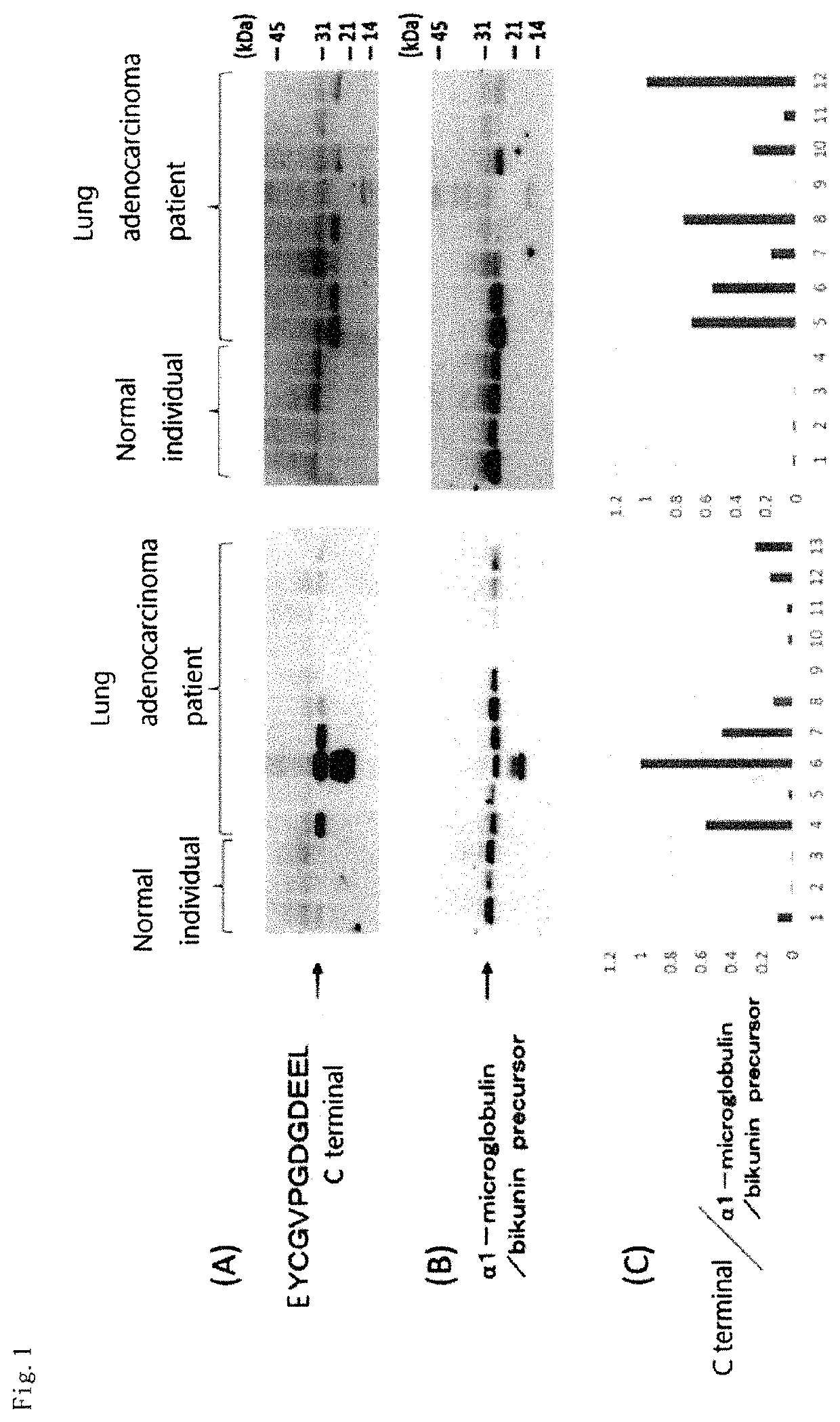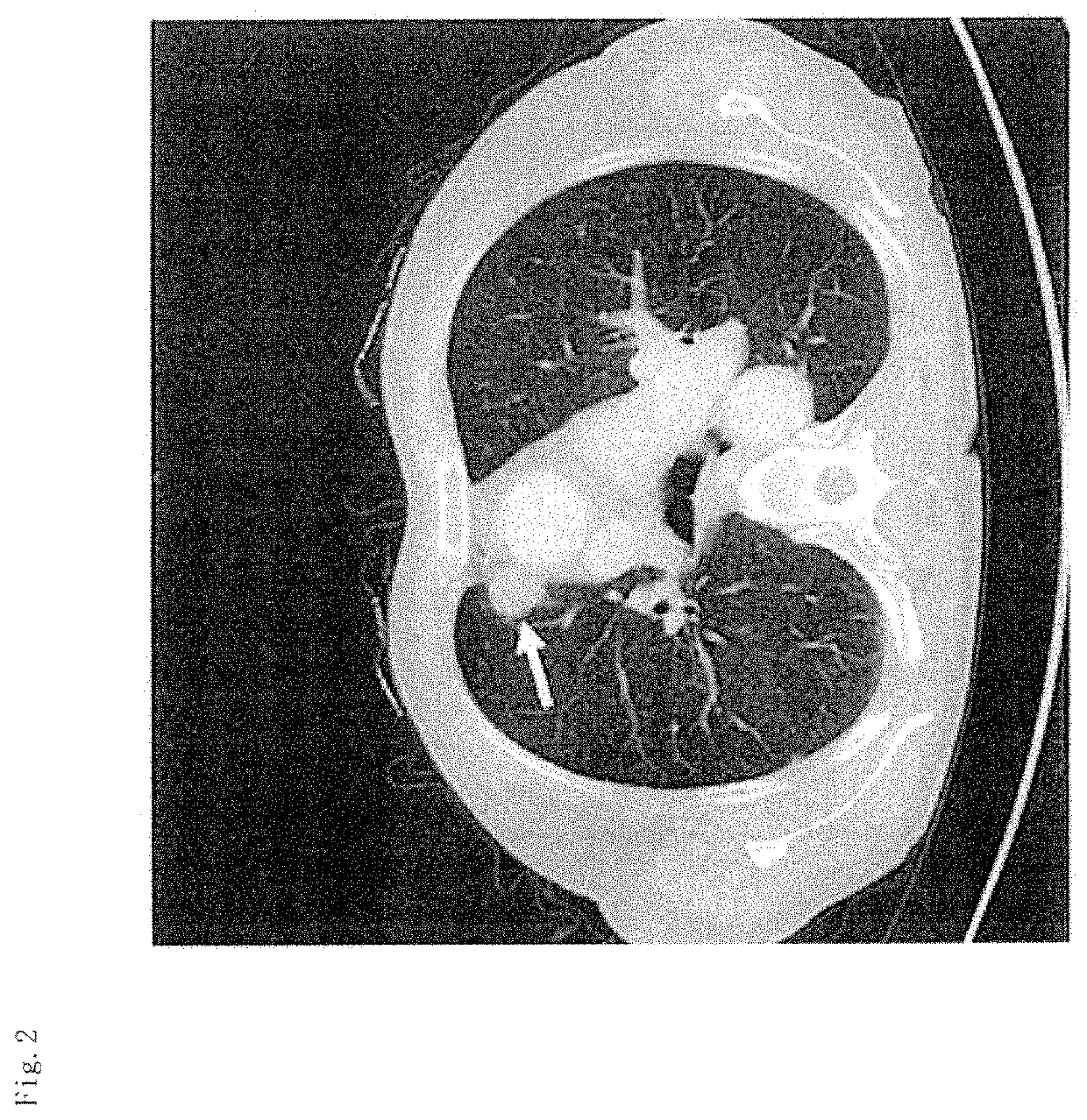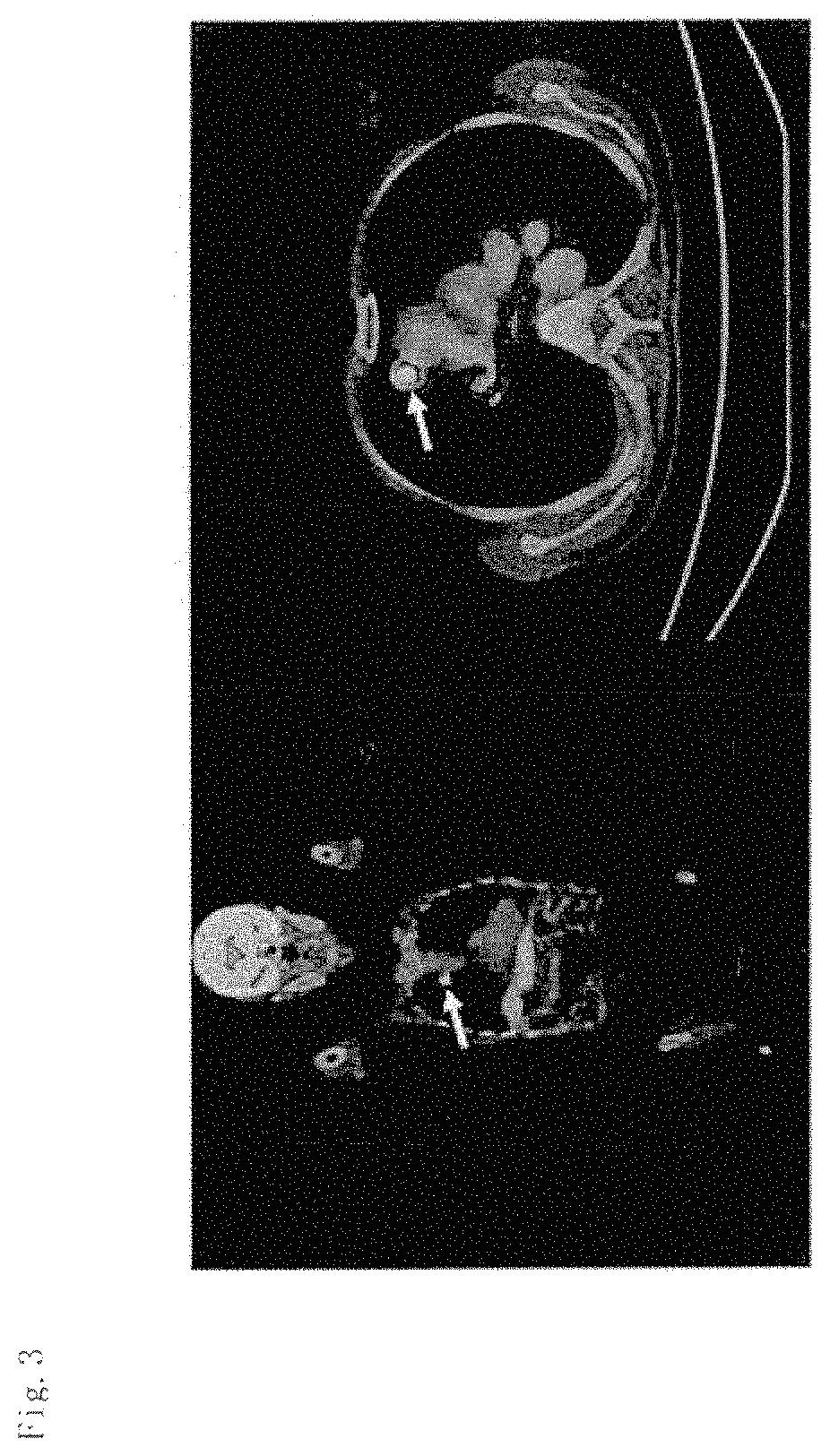Adenocarcinoma detection method
a technology of adenocarcinoma and detection method, which is applied in the direction of peptide sources, instruments, peptides, etc., can solve the problems of difficult early detection and difficult to diagnose lung adenocarcinoma in a fundamentally treatable stag
- Summary
- Abstract
- Description
- Claims
- Application Information
AI Technical Summary
Benefits of technology
Problems solved by technology
Method used
Image
Examples
example 1
[Example 1] Collection of Body Fluids
[0149]Among patients with pulmonary nodule shadows or tumor shadows, suspected of primary lung cancer by chest image examination, patients diagnosed with lung adenocarcinoma were selected by surgery, transbronchial biopsy, lymph node biopsy or cytology. Early morning midstream urine was collected from selected lung adenocarcinoma patients and healthy individuals using sterile cups. The collected urine samples were stored at −80° C. until analysis.
[0150]C-terminal protein fragments in urine from 85 cases with lung adenocarcinoma and 25 healthy individuals were comprehensively analyzed. A breakdown of clinical stages of the cases with lung adenocarcinoma showed that 18 cases were in clinical stage IA, 5 cases were in clinical stage IB, 1 case was in clinical stage IIA, 0 case was in clinical stage IIB, 6 cases were in clinical stage IIIA, 5 cases were in clinical stage IIIb, and 50 cases were in clinical stage IV. The clinical stage was judged acco...
example 2
[Example 2] Detection by Mass Spectrometry
[0151]Urine samples (˜50 mL) were collected and markers were searched by the procedures of pretreatment, acquisition of analytical data, and statistical analysis. In the pretreatment, urine samples were concentrated to 200 to 250-folds using Amicon Ultra-15 (10 kDa molecular weight cut-off) and Amicon Ultra-4 (10 kDa molecular weight cut-off) (Merck KGaA) and washed 3 times with 3 mL of triethylammonium hydrogencarbonate solution containing 100 mM NaCl, thereby removing low molecular weight molecules. Thereafter, concentrated specimens were obtained. The proteins in the concentrated specimens were quantified. The concentrations of all the specimens were adjusted to 10 mg / mL of total protein using a buffer solution and the resulting specimens were used in the subsequent analysis process. Subsequently, the samples were subjected to reductive alkylation and then digested with trypsin in a buffer prepared with a constant concentration of H218O (...
example 3
[Example 3] Selection of Markers
[0152]Regarding the peak intensity (Example 2) of each of the C-terminal trypsin-digested peptides of the MS / MS spectra obtained from urine samples from lung adenocarcinoma patients and healthy individuals based on the statistical analysis, the relative ratio of the control specimen to the peak intensity was calculated, and comparison and evaluation were made between lung adenocarcinoma patients and healthy individuals. Mann-Whitney's U test was used as the assay method. For statistical analysis, JMP12 (SAS Institute Inc, Cary, N.C.) was used. The peak intensities of protein fragments in urine were compared between 85 cases with lung adenocarcinoma or 24 cases with early-stage lung adenocarcinoma and healthy individuals. The protein fragments satisfying the criteria that the ROC-AUC value was 0.6 or more or the p value was less than 0.1 were used as marker candidates. A total of 18 types of protein fragments were identified as lung adenocarcinoma diag...
PUM
| Property | Measurement | Unit |
|---|---|---|
| concentration | aaaaa | aaaaa |
| molecular weight | aaaaa | aaaaa |
| molecular weight | aaaaa | aaaaa |
Abstract
Description
Claims
Application Information
 Login to View More
Login to View More - R&D
- Intellectual Property
- Life Sciences
- Materials
- Tech Scout
- Unparalleled Data Quality
- Higher Quality Content
- 60% Fewer Hallucinations
Browse by: Latest US Patents, China's latest patents, Technical Efficacy Thesaurus, Application Domain, Technology Topic, Popular Technical Reports.
© 2025 PatSnap. All rights reserved.Legal|Privacy policy|Modern Slavery Act Transparency Statement|Sitemap|About US| Contact US: help@patsnap.com



